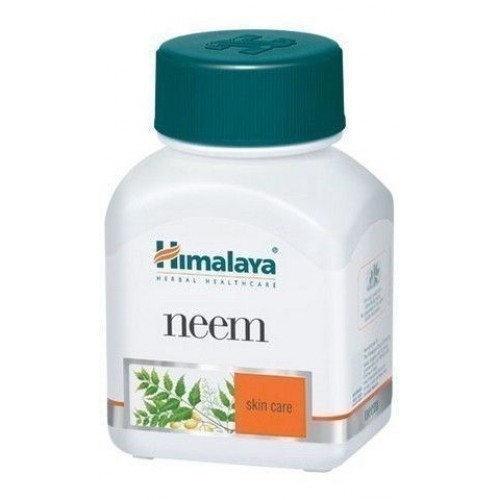Neem
Neem
Neem bottle
What is this herbal medicine?
NEEM (Margosa Tree/Azadirachta indica) has been described in Ayurveda’s prime text, the Charaka Samhita, as sarva roga nivarini (that which keeps all diseases at bay) or arishtha (reliever of disease). Neem has been used in the Ayurvedic tradition for thousands of years for maintaining health and overall well-being. The roots, bark, gum, leaves, fruit, seed kernels and seed oil are all used in therapeutic preparations for both internal and topical use. Scholars from the Department of Microbiology at Rajah Muthiah Medical College, Annamalai University, India, studied the skin supportive effects of the seeds and leaves of the Neem plant and found the results to be encouraging (Indian Journal of Medical Microbiology, April/June 2003, 21(2):98-101). Similarly, researchers from the Department of Biochemistry at the University of Calcutta, India, said, ‘the results of our study give some scientific support to the uses of Neem employed by the indigenous people in India for normal dermal function and internal cleansing support’ (Journal of Ethnopharmacology, May 22 2007, 111(3):607-12). Native to Burma, Neem trees are found in abundance in India in naturalized, dry forests.
Active constituents
Neem leaves mainly yield the flavanoid quercetin and nimbosterol as well as a number of limonoids. Quercetin, a polyphenolic flavonoid, is known to have antibacterial and antifungal properties. The flowers also yield a waxy material consisting of several fatty acids. The bark contains various tannins in different forms. The seed is very important both because of its high lipid content and the presence of a large number of bitter principals such as azadirachtin, azadiradione, fraxinellone, nimbin, salannin, salannol, vepinina and vilasinin.
Herb functions:
- Skin disorders: Neem is mentioned in most Ayurvedic formulations for the treatment of skin disorders, because of its detoxifying properties. The growth of acne-causing bacteria such as propionibacterium acnes (P. acnes) and staphylococcus epidermidis is also inhibited by Neem. The role of Neem in acne is further supported by studies which have shown that it exhibits anti-inflammatory activity by suppressing P. acnes-induced reactive oxygen species (ROS) and the pro-inflammatory cytokines TNF-a and IL-8.
- Gastrointestinal: The antioxidant, antisecretory and proton-pump inhibitory (reduction of gastric acid production) properties of the Neem leaf extract work as a gastroprotective and are effective in healing ulcers.
Indications:
- Acne vulgaris (pimples)
- Skin allergies & infections
Contraindications:
None
Recommended dose:
One capsule, twice a day or as directed by your physician
Composition
Each capsule contains 250mg extract of Neem
Note: The information on this page is not intended to be a substitute for professional medical advice. Do not use this information to diagnose or treat your problem without consulting your doctor.













